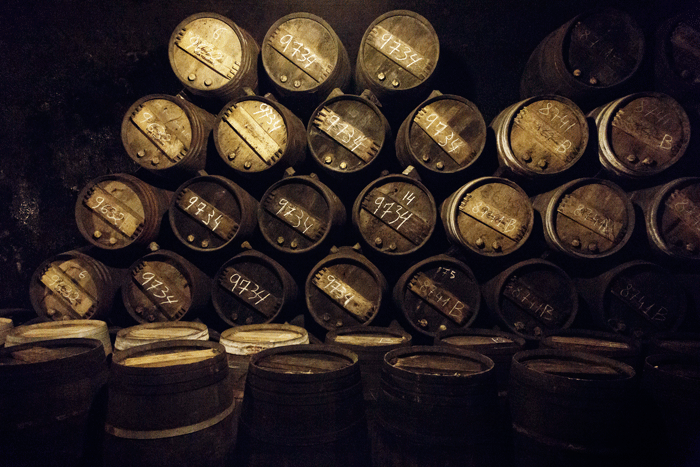All you need to know about Sherry
Author: Berry Bros. & Rudd
Mention that you like Sherry to most people and you will be met with one of two reactions: a fascinated state of confusion, whereby your audience stares at you as if to say, “But I thought she had taste”, or a pitying look that clearly says, “Oh, Sherry is sooo last year, darling. I’ve moved on to drinking in secret basement bars in zones three and four.” There is not much to be done about the latter, but I firmly believe that the former need simply be introduced to this most marvellous of beverages, and then conversion will surely follow.
The first time I tried “proper” Sherry (by which I mean the non-Cream styles that Great Aunts drink at Christmas time) I spat it out. What was this vile, salty solution? And why did people rave about it? It turns out that the Sherry in question was a lovely Fino, however, it was served at room temperature. As I was to find out in later years, although a chilled glass of Fino is a wonderful thing, served lukewarm it is akin to a bottle of lager left out in the sun for too long. Undrinkable.
However, rather than tell you all my Sherry-related tales (and there are many – a love affair with Sherry goes hand-in-hand with a love affair with Andalucia, one of the world’s most romantic and food-friendly destinations) I thought it might be more helpful to give you four styles to get started with.
One final word on Sherry before I leave you to browse this list: it is exceptionally good value. These remarkable wines have been aged for many years in the Solera system and have reached incredible levels of complexity and flavour, yet you can pick up a reasonable bottle of Sherry for less than £15. They are such characterful wines and are so food friendly – what’s not to love?
Fino
One of the braver choices for a Sherry novice, Fino is the most pale, delicate style of Sherry. Aged under a layer of flor (yeast), it has no contact with the air around it. The result is bone-dry, slightly salty, yet very refreshing apéritif style which demands to be sipped ice cold, in the sunshine, with a plate of salted almonds or olives.
The one to try:
Puerto Fino, Solera Reserva, Emilio Lustau
£15.35
Amontillado
This Sherry is very similar to Fino, however is has limited exposure to the air, giving it a slightly darker hue and a delicate hazelnutty taste. It is fortified at around 16° to retain its delicate hallmark and to make sure that it doesn’t oxidise too much. This style of Sherry is very versatile, ideal with jamon, consommés and even lighter game dishes and terrines.
The one to try:
Amontillado del Puerto, Almacenista Obregon, Emilio Lustau
£21.95
Dry Oloroso
My personal favourite, dry Olorosos do not grow the layer of flor, therefore they turn a rich, mahogany brown thanks to their contact with the air. A good Oloroso is a glorious thing: nutty, complex, rich and interesting, they mature in the glass and are perfect with richer meats, blue cheese and nuts.
The one to try:
Berrys’ Dry Oloroso, Sanlucar de Barrameda
£10.45
Sweet Oloroso
Not to be confused with the dry style, above, sweet Oloroso is made with the addition of the unctuous, sticky ‘PX’ (Pedro Ximenez) style of Sherry. Be warned: good sweet Olorosos are sometimes hard to come by, and many of the afore-mentioned Cream sherries are labelled this way. Shop around to make sure that you find an example that manages to marry the Oloroso’s natural complexity with the PX’s addictive sweetness, without becoming too sickly or cloying.
The one to try:
East India Solera, Emilio Lustau
£11.95



